You can choose from several emergency calling watches that operate independently without phones, including the SOS Smartwatch by Bay Alarm Medical with its physical SOS button, Apple Watch Cellular models (Series 7-9, SE, Ultra 2), Samsung Galaxy Watch LTE with triple-tap emergency activation, Google Pixel Watch LTE featuring RapidSOS technology, and specialized Lifeline Smartwatch designed specifically for medical alerts. These devices use built-in 4G LTE cellular connections to contact emergency services directly and share your GPS location with responders. The details below will help you select the perfect emergency watch for your specific situation.
How Emergency Calling Watches Function Without Smartphones

While traditional smartwatches depend on smartphone connectivity, emergency calling watches operate independently through built-in cellular technology.
You’ll find these devices use 4G LTE networks to maintain constant connectivity without requiring a paired phone nearby. When you press the designated emergency button multiple times, the watch instantly connects to emergency services using its cellular capabilities.
Your watch’s built-in microphone and speaker enable direct voice communication with emergency responders. The embedded GPS technology automatically shares your precise location during emergency calls, helping responders find you quickly.
Built-in GPS automatically transmits your exact location to emergency responders, ensuring rapid assistance when every second counts.
Some models even offer satellite backup when cellular coverage is poor. The monthly monitoring fees for these watches cover the cellular service, eliminating the need for a separate phone plan. This independent functionality means you can initiate emergency calls, communicate with responders, and share your location entirely through the watch itself, making these devices truly standalone emergency communication tools.
SOS Smartwatch by Bay Alarm Medical Features and Capabilities
When emergency situations arise, the SOS Smartwatch by Bay Alarm Medical delivers extensive protection through its robust feature set and independent cellular connectivity.
You’ll access help through the physical SOS button—simply press and hold for five seconds to connect with emergency responders. The built-in GPS pinpoints your exact location, while the two-way speaker enables direct communication with the emergency center, which responds within an average of 16 seconds.
You don’t need a smartphone since the watch operates via 4G LTE connectivity. Optional AI-powered fall detection automatically alerts emergency services when accidents occur.
The IP67 water-resistant device tracks your steps and withstands various weather conditions. The watch features a user-friendly interface with no bloatware or unnecessary apps that could complicate emergency situations. Caregivers can monitor your real-time location and receive low battery alerts through the companion app, ensuring continuous protection.
Apple Watch Cellular Models for Independent Emergency Communications
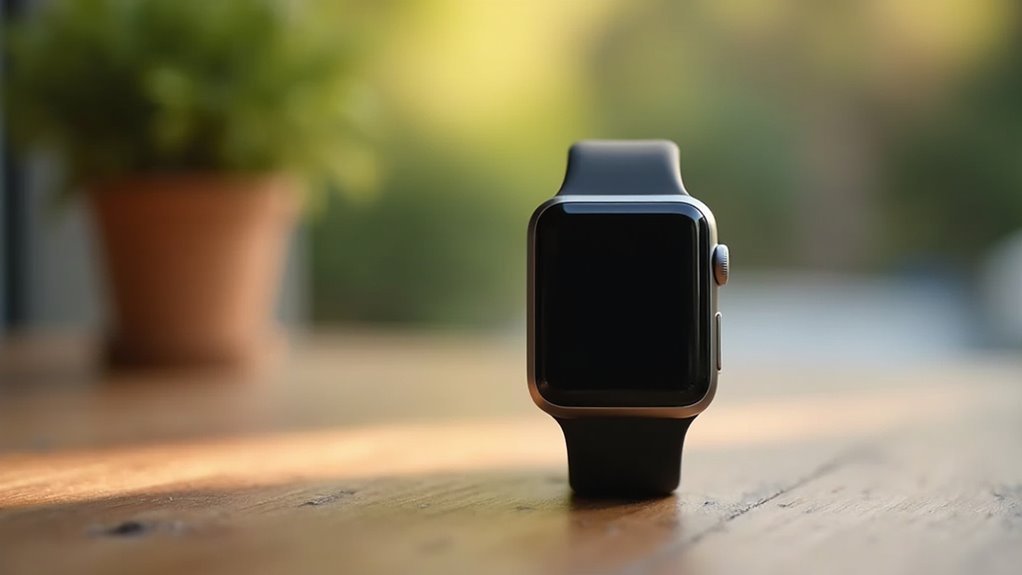
Apple’s cellular-enabled watch models transform emergency response by operating independently from your iPhone during critical situations. You’ll find extensive emergency features across Series 7, 8, 9, SE, and Ultra 2 cellular models that connect directly to carrier networks like Verizon, AT&T, and T-Mobile.
| Feature | Capability | Requirements |
|---|---|---|
| Emergency SOS | Manual activation via side button | Cellular activation |
| Fall Detection | Auto-calls after 1 minute immobility | Medical ID setup |
| Crash Detection | Initiates calls after severe accidents | Carrier compatibility |
| Location Sharing | Updates emergency contacts continuously | Emergency contacts configured |
These watches use eSIM technology, eliminating physical SIM cards while maintaining global compatibility. You’ll need carrier activation for full functionality, though emergency calls work even without complete activation. The system automatically alerts your emergency contacts and shares location updates during SOS situations.
For international travelers, emergency SOS calls abroad will connect to local emergency services in your current location, ensuring you can access help anywhere your watch has cellular coverage.
Samsung Galaxy Watch LTE Emergency SOS Functionality
How does Samsung’s Galaxy Watch LTE stack up against Apple’s emergency capabilities?
Samsung’s Galaxy Watch 4, 5, and 6 with LTE plans offer robust emergency features that work independently from your phone. You’ll get thorough safety tools including fall detection and location sharing.
Here’s how Samsung’s emergency SOS works:
- Quick Activation – Press the Home/Power button three times to trigger SOS alerts
- Automatic Calling – The watch immediately calls your primary emergency contact
- Location Tracking – Contacts receive your location updates every 15 minutes for 24 hours
- Medical Information – Store blood type, allergies, and medications accessible to first responders
The watch sends “SOS I need emergency help” messages with location links.
You can cancel alerts anytime through the watch’s notification system. The newer Galaxy Watch7 and Watch Ultra models include enhanced Hard fall detection capabilities that automatically trigger emergency protocols when severe impacts are detected.
Google Pixel Watch LTE Emergency Calling Without Phone Connection
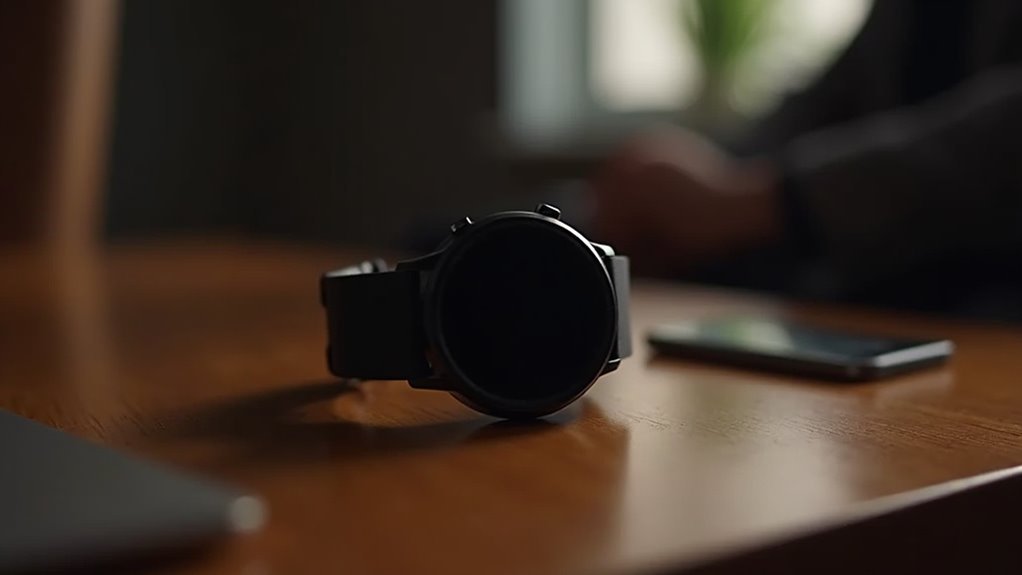
While Samsung offers solid emergency features, Google’s Pixel Watch LTE brings its own approach to independent emergency calling.
You’ll activate Emergency SOS by pressing the crown five times, then confirming by holding the display for three seconds. This prevents accidental calls while ensuring quick access during real emergencies.
Your watch connects directly to 911 without needing your phone nearby, provided you’ve got an active LTE connection. Google integrates RapidSOS technology, meaning emergency responders receive your critical information automatically when available in your area.
The Pixel Watch LTE enables direct 911 calls through RapidSOS technology, automatically sharing your critical information with emergency responders when available.
You’ll also benefit from Fall Detection that alerts emergency contacts and Safety Check features. The watch shares your location data with local Emergency Communication Centers through Android Emergency Location Services to help responders find you quickly.
However, some advanced safety functions require a Fitbit Premium subscription, and all emergency features depend on reliable network coverage.
Garmin Smartwatches With Satellite and LTE Emergency Features
Garmin takes emergency calling beyond traditional cellular networks by combining both satellite technology and LTE connectivity in select smartwatches.
You’ll get global coverage even in remote areas where cellular towers don’t reach. The International Emergency Response Coordination Center (IERCC) handles your emergency calls, providing dedicated professional response services.
Key emergency features include:
- Satellite SOS capability – Works without any phone connection in remote locations
- LTE emergency calling – Direct calling through cellular networks on compatible models like Forerunner 945 LTE
- Automated GPS messaging – Sends your exact location to emergency contacts and response centers
- Interactive communication – Two-way messaging with emergency responders using pre-configured responses
You’ll need to set up emergency contacts beforehand and maintain a data plan for LTE features to function properly. These emergency features only work with supported Activity Profiles, as third-party apps downloaded from the Connect IQ Store don’t support incident detection functionality.
Lifeline Smartwatch Medical Alert System Overview
You’ll find the Lifeline Smartwatch stands out as a dedicated medical alert system designed specifically for emergency situations rather than general fitness tracking.
The watch’s emergency help button connects you directly to trained response specialists 24/7, while GPS tracking guarantees they can locate you anywhere.
These medical alert benefits make it particularly valuable if you’re focused on safety and emergency preparedness over traditional smartwatch features. The device features a waterproof design that allows you to wear it safely in showers or baths without worry about damage.
Key Features Overview
The Lifeline Smartwatch combines essential emergency response capabilities with everyday health monitoring in a single, user-friendly device.
You’ll have access to professional emergency assistance through a prominent Help Button that connects directly to trained responders 24/7. The device’s advanced GPS and Wi-Fi tracking guarantees help can find you anywhere, whether you’re home or away.
Key features that make this smartwatch stand out include:
- Automated fall detection – Alerts responders if you fall and can’t respond
- Waterproof design – Safe to wear in shower where slips commonly occur
- Continuous heart rate monitoring – Tracks your health metrics on-demand
- 600mAh battery capacity – Provides extended daily use with voice alerts for low battery
The intuitive touchscreen interface keeps essential functions easily accessible without complex navigation. The system includes step tracking functionality to help you monitor your daily activity and maintain an active lifestyle.
Medical Alert Benefits
Beyond these core capabilities, medical alert systems like the Lifeline Smartwatch deliver life-changing benefits that extend far beyond emergency response.
You’ll maintain your independence while staying connected to 24/7 trained care specialists who respond immediately during emergencies. The device’s heart rate monitoring and step tracking help you detect health changes early, enabling proactive healthcare management.
You can move freely without carrying a phone nearby, thanks to integrated GPS and Wi-Fi location technology that guarantees you’re found quickly anywhere.
The waterproof design reduces fall risks during showers, while optional fall detection connects you to help even when you can’t press the button.
Voice prompts keep you informed about battery status and notifications, making the user-friendly interface accessible for everyone. This system provides comprehensive coverage through an all-in-one system that works effectively in any location, from supermarkets to your own backyard.
Cellular Vs Wifi-Only Models for Emergency Situations
When choosing an emergency calling watch, understanding the fundamental difference between cellular and WiFi-only models can determine whether you’ll receive help when it matters most.
Cellular models like the Bay Alarm Medical SOS Smartwatch operate independently using AT&T’s LTE network, requiring no smartphone or WiFi connection. They’ll connect you with operators in about 10 seconds, even in remote areas with cellular coverage.
Cellular emergency watches work independently without smartphones or WiFi, connecting users to operators in seconds even in remote locations.
WiFi-only models, including GPS-only Apple Watches, depend on paired phones or stable WiFi connections. While they’re cost-effective for indoor use, they’re unreliable outdoors or in areas without network access. For areas with poor reception, satellite-backed emergency tools from Apple or Garmin are recommended.
Key considerations for emergency situations:
- Coverage area – cellular works anywhere with cell service
- Independence – no smartphone pairing required
- Reliability – functions during WiFi outages
- Response time – immediate emergency connections
Automatic Fall Detection Technology in Standalone Watches
When you’re wearing a standalone emergency watch, you’ll want to understand how its fall detection technology actually works to protect you.
These devices use accelerometers and barometers to measure sudden speed changes and pressure variations that indicate a fall, then rely on AI algorithms to distinguish real emergencies from normal daily activities.
However, you should know that wrist-worn devices face accuracy challenges since natural arm movements can trigger false alarms or cause the system to miss actual falls. Advanced systems like RealFall™ technology use sophisticated algorithms to minimize these false alerts while maintaining reliable fall detection.
How Fall Detection Works
Fall detection technology in standalone emergency watches relies on sophisticated sensor arrays and intelligent algorithms to automatically identify when you’ve experienced a potentially dangerous fall. Your watch continuously monitors motion through accelerometers and gyroscopes, analyzing sudden velocity changes and orientation shifts that indicate fall events.
The detection process follows these key steps:
- Impact Detection – Sensors measure sudden acceleration changes when you hit the ground.
- Angle Analysis – Algorithms assess your body’s orientation to confirm a fall occurred.
- Inactivity Monitoring – The watch checks if you remain motionless after impact.
- Alert Countdown – You’ll receive a prompt allowing cancellation before emergency contacts are notified.
Advanced models use machine learning to reduce false alarms while improving accuracy, ensuring you get help when needed without unnecessary alerts. Since this technology requires activation through settings, it’s important to configure your emergency features when you first set up your device.
Accuracy and False Alerts
Accuracy remains the most critical factor when evaluating standalone emergency watches, as your safety depends on the device’s ability to correctly identify genuine falls while minimizing disruptive false alarms.
Studies show mixed results, with some smartwatch apps achieving 77% sensitivity and 99% specificity for fall detection. However, you’ll encounter considerable false-negative rates around 16.4%, meaning the device might miss actual falls.
Wrist-based devices typically struggle with higher false-positive rates compared to waist-mounted sensors. Advanced machine learning algorithms and accelerometer data analysis can achieve up to 99.14% accuracy in controlled studies.
You can often adjust sensitivity settings to reduce false alerts based on your activity level, though this may impact detection reliability. Device variability means accuracy differs considerably between brands and models. Deep Learning models generally demonstrate superior performance and better generalization to new users compared to traditional machine learning approaches.
Satellite Emergency Communication in Remote Areas
Although cellular networks fail in wilderness areas, satellite emergency communication devices provide a critical lifeline when you’re exploring remote locations.
These devices connect directly to global satellite networks, enabling emergency calls and messaging without any phone dependency.
Key features that make satellite communicators essential for remote adventures:
- SOS buttons transmit your GPS coordinates directly to rescue coordination centers.
- Two-way messaging lets you communicate with emergency services and describe your situation accurately.
- Real-time tracking allows emergency contacts to monitor your location remotely.
- Automatic detection triggers distress signals if you’re unresponsive after a fall or crash.
Modern satellite communicators now offer photo sharing capabilities, allowing you to transmit visual information about your location or situation to emergency contacts.
Remember that effective satellite communication requires clear line-of-sight to the sky, so dense canopy or mountainous terrain may limit signal strength.
Two-Way Communication Features With Emergency Operators
Three advanced features distinguish emergency calling watches from basic alert devices: dedicated two-way speakerphones, voice-activated communication, and direct operator connections. You can speak directly with emergency operators through built-in speakers, eliminating the need for additional devices. Voice activation simplifies emergency calling when you can’t physically press buttons, while auto-dialing sequences guarantee someone responds to your call.
| Feature | Benefit |
|---|---|
| Two-Way Speakerphone | Real-time conversation with operators |
| Voice-Activated Calling | Hands-free emergency activation |
| Auto-Dialing Sequence | Calls multiple contacts until answered |
| Direct Operator Connection | Immediate access to trained specialists |
These watches connect you directly with trained care specialists who can assess your situation and coordinate appropriate responses. The combination of automatic fall detection and two-way communication guarantees you’re never truly alone during emergencies. Modern emergency watches feature crystal clear sound quality that ensures effective communication even in challenging environments or stressful situations.
Reliability Factors and Limitations of Emergency Watch Functions
While emergency calling watches offer impressive communication capabilities, their detection accuracy reveals considerable gaps that could affect your safety during critical moments.
Fall detection sensitivity reaches only 77%, meaning nearly one in four actual falls goes undetected. False-negative rates can hit 16.4%, potentially leaving you without help when you need it most.
Emergency calling watches miss nearly 25% of actual falls, creating dangerous gaps in protection when seniors need help most.
Several factors compromise reliability:
- Detection limitations – Algorithms perform better detecting falls on the same side as your watch, missing emergencies on the opposite side.
- False alarm problems – Only 5-10% of monthly emergency button presses represent real emergencies.
- Environmental constraints – Poor GPS signals and physical obstructions affect location-based responses.
- Hardware inconsistencies – Performance varies considerably across different smartwatch models and operating systems.
Despite these challenges, emergency watches enable many seniors to maintain their independence while living alone. The GPS localization feature provides critical location data to emergency responders, helping overcome communication barriers during medical crises.
Subscription Requirements and Cellular Plan Considerations
Beyond the technical limitations, emergency calling watches typically require an active cellular subscription to function independently when you’re away from your paired smartphone or Wi-Fi networks.
Apple Watch Series 5 and later models with GPS + Cellular need this cellular connection for Emergency SOS to work without your iPhone nearby.
You’ll need to verify compatibility with your carrier, as your iPhone and Apple Watch must usually share the same provider.
Some prepaid or enterprise accounts don’t support smartwatch cellular service, so check eligibility first.
Monthly fees vary by carrier, though budget options exist—US Mobile offers plans starting at $6.50 monthly.
Without an active plan, you’ll lose full emergency calling capabilities, though some U.S. carriers may relay 911 calls as an exception. The watch will automatically send location updates to your emergency contacts for a period after entering SOS mode.
Choosing the Right Emergency Watch for Your Specific Needs
How do you determine which emergency watch best fits your lifestyle and safety requirements? Your choice depends on your specific circumstances and risk factors.
Consider these key factors when selecting your emergency watch:
- Activity Level – Outdoor adventurers need robust satellite connectivity and durability features like titanium construction, while everyday users benefit from fall detection and medical ID access.
- Health Conditions – If you’re elderly or have medical issues, prioritize automatic fall detection and easy medical information access for first responders.
- Geographic Coverage – Choose watches with international emergency calling or dual-frequency transmitters if you travel frequently or live in remote areas.
- Ease of Use – Physical SOS buttons offer intuitive activation during crises, while touchscreen interfaces provide more functionality but require deliberate interaction.
- Device Compatibility – Ensure your emergency watch works with your existing smartphone, as some models like the Apple Watch SE require iPhone Xs or later for full functionality and setup.
Frequently Asked Questions
Can Emergency Watches Work Internationally When Traveling Abroad?
Yes, you can use emergency watches internationally if they have integrated SIM cards with global roaming or satellite communication capabilities. However, you’ll face network compatibility issues and regional restrictions depending on your destination.
How Long Does the Battery Last During Emergency Situations?
Your emergency watch’s battery typically lasts 6-18 hours during emergencies, though most models provide 18-24 hours on full charge. You’ll receive low battery alerts, and charging takes 2-3 hours to complete.
What Happens if the Watch Gets Damaged or Wet During Emergencies?
If your watch gets damaged or wet during emergencies, you’ll risk losing critical SOS functions like emergency calling, fall detection, and cellular connectivity, potentially preventing you from getting help when you need it most.
Do Emergency Watches Work for Children or Only Adults?
You’ll find emergency watches work for both children and adults, but they’re designed differently. Kids’ watches focus on GPS tracking and limited contacts, while adult versions emphasize medical alerts and fall detection.
Can Multiple Family Members Monitor One Person’s Emergency Watch Alerts?
You can set up multiple family members to receive emergency alerts from one person’s watch. Most devices let you customize which contacts get notifications and use dedicated apps for real-time monitoring.

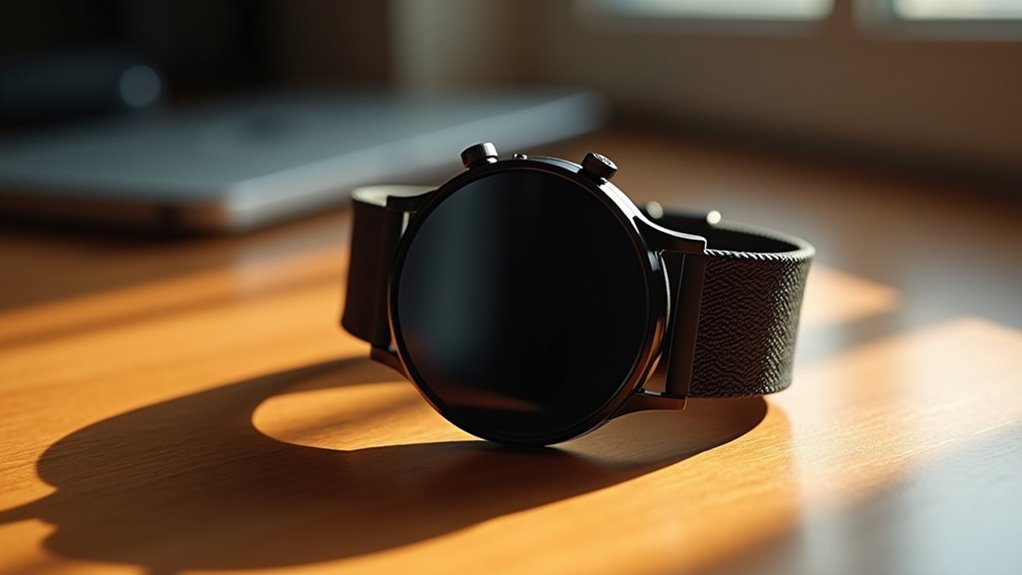
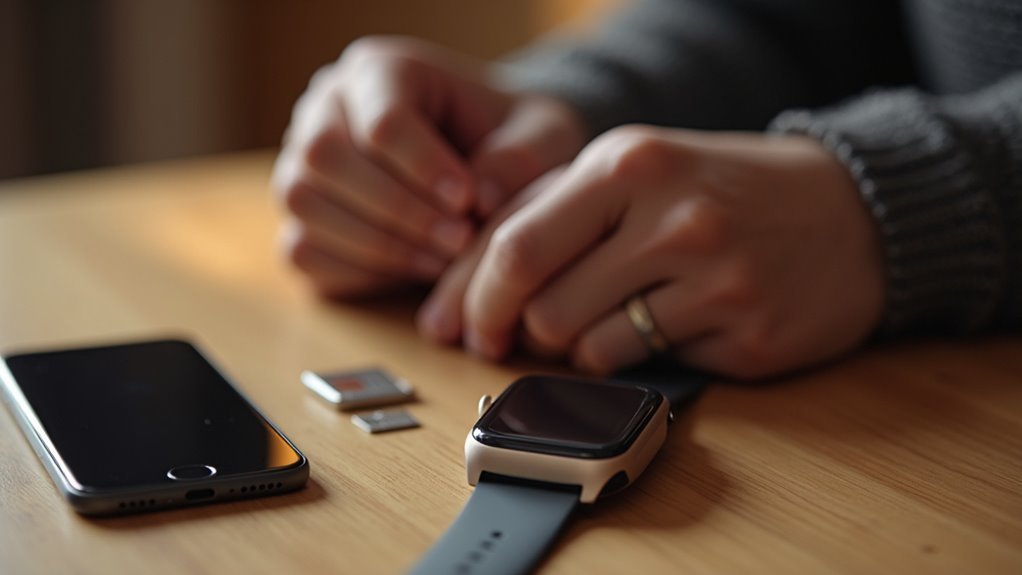
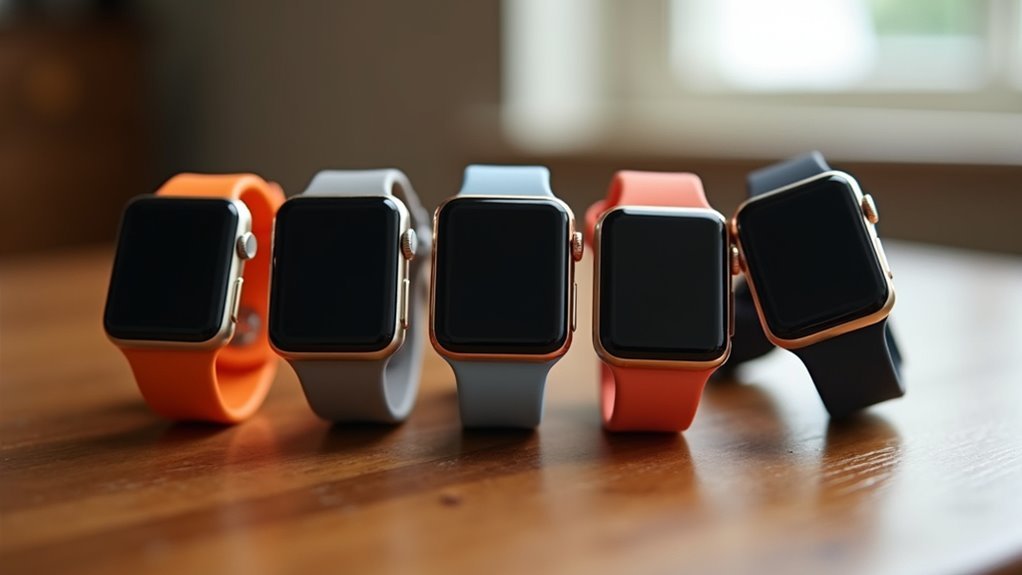
Leave a Reply